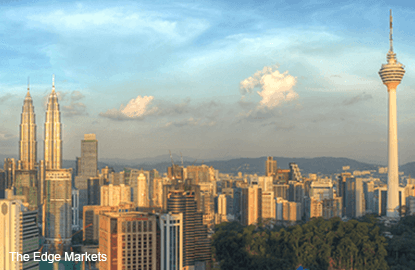
KUALA LUMPUR (Aug 19): Approved direct investments into Malaysia grew a modest 1.3% or RM1.5 billion to RM113.5 billion in the first half of 2015 (1H15) compared with last year’s RM112 billion worth of investments in the same period.
International Trade and Industries Minister Datuk Seri Mustapa Mohamed said the government has also exceeded its 10th Malaysia Plan (RMK10) target of RM740 billion for total investments realised by 9.9%.
“Investor confidence sustained Malaysia’s growth as total investments realised to date under the RMK10 period (2011 to 2015) was RM813.5 billion, exceeding the plan’s target of RM740 billion, despite the slow private investment growth,” said Mustapa.
He was speaking to reporters during a media briefing by the Malaysian Investment Development Authority (MIDA) on Malaysia’s 2015 first half investment performance.
He also pointed out that the services sector accounted for the largest share of total investments, contributing 54.4% or RM61.7 billion, followed by the manufacturing sector (43.6% or RM49.5 billion) and the primary sector (2% or RM2.3 billion).
Services sector investment grew by 4.9% in 1H15, slower than 1H14.
“The slower growth was mainly due to the lower investment in the real estate sector, which shrank 45.4% to RM15.9 billion from RM29.2 billion in 1H14. The distributive trade sector also recorded a down trend of 52.4% to RM2.09 billion from RM4.39 billion last year,” said Mustapa.
The approval of three new highways led the transport sector’s total investment to more than double to RM12.8 billion from last year’s investment of RM6.3 billion.
For 1H15, 101 regional establishments had about RM3 billion worth of investments approved. Four global operations hub projects were also approved with investments valued at RM2.6 billion.
Investments into the primary sector declined nearly five times to RM2.3 billion this year from RM10.1 billion in 1H14, due to lower investments in the upstream oil and gas activities as well as lower global crude oil prices.
In the manufacturing sector, petroleum product industries investments totalled RM25.4 billion, and made up 51.3% of the whole sector; non-oil sectors received RM24.1 billion worth of investments.
“This is mainly from the transport equipment, electrical and electronic, fabricated metal, non-metallic mineral products and chemical products [sectors]. More than 25% of projects in these five sectors reported having value-added of 60% and above.
“This reflects the continued efforts by Malaysian manufacturers to move into higher value added services,” said Mustapa.
The non-oil sector also saw 255 Malaysian-owned manufacturing projects with investments totalling RM11.2 billion approved.
State breakdown saw Johor registering the highest amount of investment at RM27 billion in the manufacturing sector, up 72% increase from RM15.7 billion in 1H14.
The other top 10 states on investment value for 1H15 are: Melaka (RM6.2 billion); Penang (RM4.3 billion); Selangor (RM4.2 billion); Perak (RM3 billion); Kedah (RM1.1 billion); Pahang (RM1 billion); Negri Sembilan (RM940 million); Sarawak (RM640 million); and Sabah (RM340 million).
Moving forward, the government plans to attract more quality foreign investments with trade and investment missions this year covering major capital-exporting countries in North America, Europe and Asia, particularly China.
“In tandem with China’s current overseas investment policies, we see encouraging investments from China into the country. For the first half of this year, Malaysia attracted 10 manufacturing projects from China worth RM1.2 billion.
“In addition, there has also been an increase in merger and acquisition activities in the eco-glass and metal industries,” said Mustapa, adding that Malaysia is positioning itself to take advantage of China’s outward investment strategy: The One Belt, One Road Initiative.
As at June 2015, MIDA has 299 projects with investments worth RM21.8 billion in the pipeline for the manufacturing and services sectors.
These projects are mainly in the food manufacturing, transport technology, chemicals and advanced materials, electric and electronic, healthcare, education and hospitality.